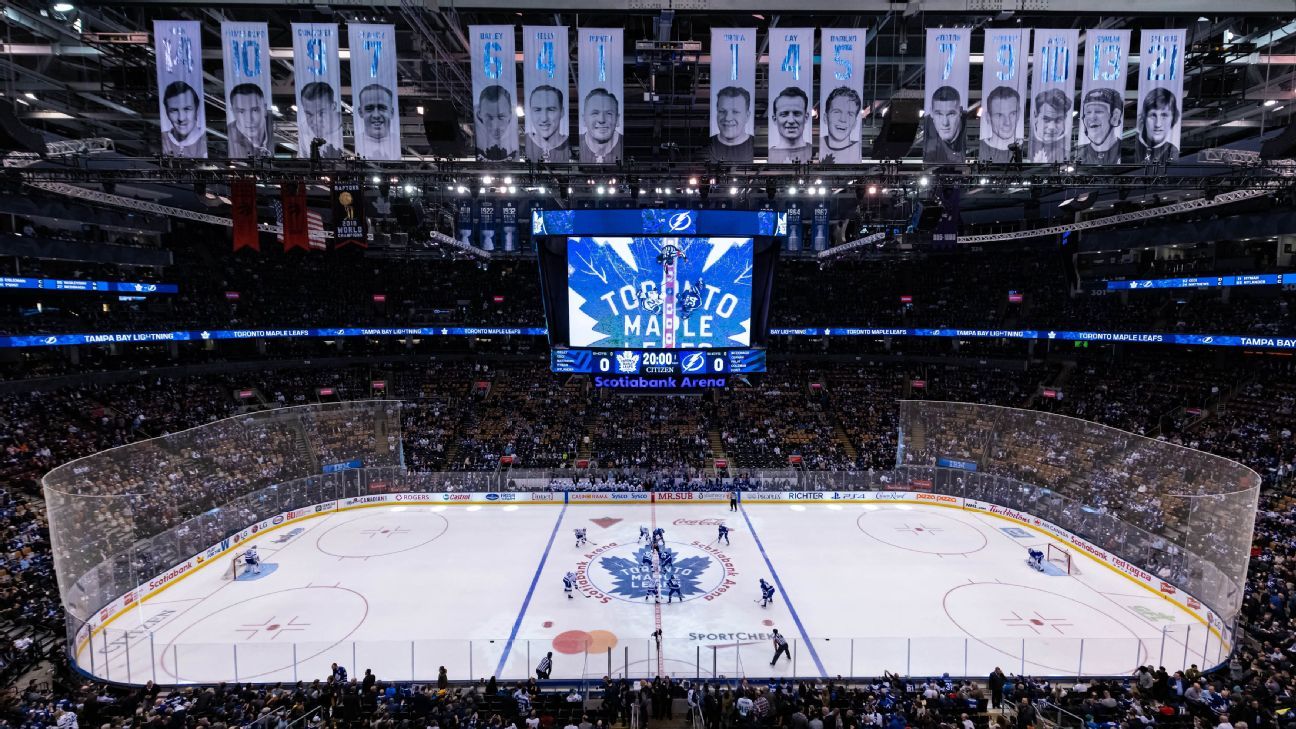The NHL will have a five-second delay on broadcasts and artificial crowd noise when it restarts its season in Toronto and Edmonton beginning Aug. 1.
The league distributed “Phase 4” information to teams and media this week, detailing life in the bubbles for the 24 teams returning to play. That includes how games will look and sound without fans inside Scotiabank Arena in Toronto, where NBC will produce the Eastern Conference postseason, and Rogers Place in Edmonton, where Sportsnet will produce Western Conference coverage.
Each arena will have 32 cameras, 12 more than usual. Cameras will be repositioned to capture more of the ice and show new angles. Rather than empty seats behind the benches, the NHL has constructed a rinkwide stage featuring LED screens and banners. Empty seats on the lower bowl of each arena will be covered by a tarp.
Stanley Cup logo at center ice in the hub arenas. pic.twitter.com/i1PqCqKngN
— Greg Wyshynski (@wyshynski) July 24, 2020
Since acoustics will be different without fans, there will be a five-second delay on broadcasts in an effort to prevent audible unsavory language — an NHL initiative agreed to by the NHLPA.
Other sound will be provided by “EA Sports supplemental crowd noise,” following the lead of Major League Baseball and soccer’s English Premier League, which use video game sounds to fill the audio void.
Inside the arena, players will hear fans. NHL teams recently asked season-ticket holders to submit video of them cheering, jeering and chanting. The “replicated chants” will be played inside the arena.
There also will be “special theme nights,” including on Aug. 1 (Chicago Blackhawks vs. Edmonton Oilers and Montreal Canadiens vs. Pittsburgh Penguins), when the NHL will “honor front-line pandemic workers and those who are advocating for social justice.”
The NHL is allowing players to create customized helmet and uniform decals that celebrate “community, charities, businesses, fans, front-line heroes, youth programs and social justice advocates.” The decals will have the hashtags “#ISkateFor” and “#WeSkateFor.”
The NHL also released information about the bubbles, where players will live for up to 2½ months, depending on how far their teams advance. The hubs will have 14 restaurants, bars, pubs, food trucks and coffee shops, eight movie theaters and activity spaces as well as player lounges.
From a health and safety perspective, everyone inside the bubble will be tested for COVID-19 daily. Individuals will use the CLEAR Health Pass on mobile devices to track health and for real-time temperature checks across more than 75 access points in the hub cities.
